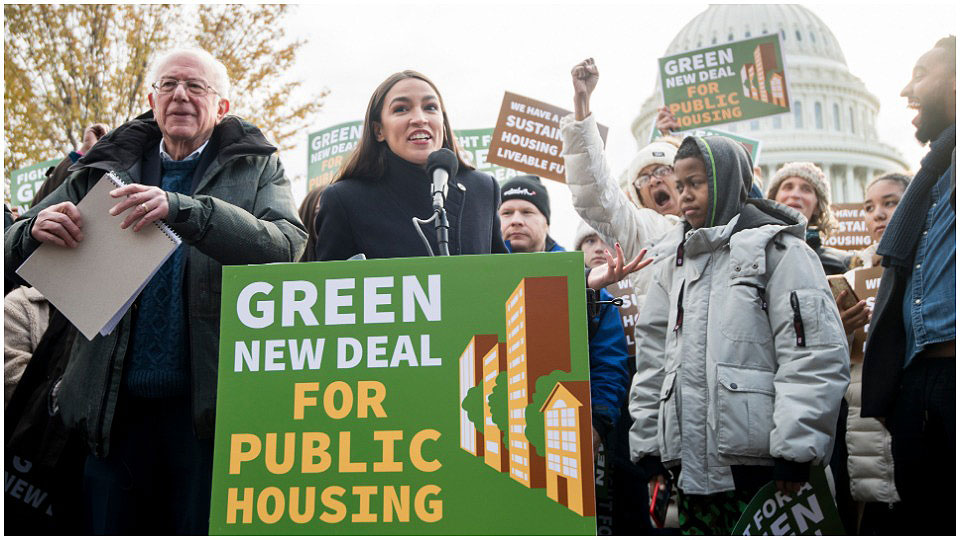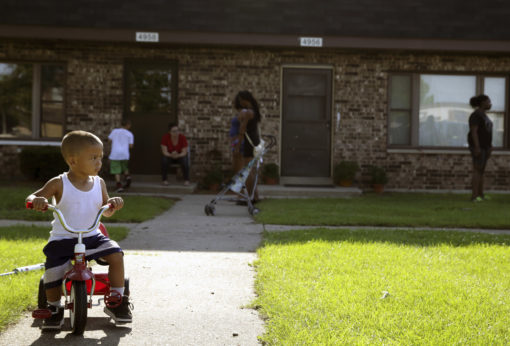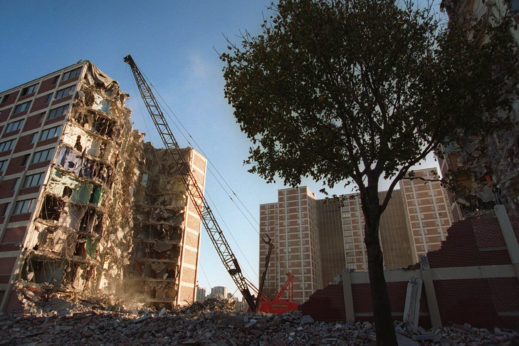
The United States is facing an unprecedented housing crisis. Nearly two-thirds of renters nationwide cannot afford to buy a home. Home prices are rising at twice the rate of wage growth. According to a study by the Joint Center for Housing Studies of Harvard University, homeownership rates among young adults are lower than in 1988, and the share of cost-burdened renters is drastically higher, with nearly half of all tenants paying more than 30% of their income for housing.

Even as we face the catastrophic dangers posed by climate change, the crumbling infrastructure of the United States is not only adding to our carbon imprint, it is costing the public coffers an enormous amount of money each year. When it comes to public housing, substandard and often toxic housing conditions are the norm, especially for struggling workers, older adults, and people living with disabilities, who depend on a dwindling number of public units.
To take on these challenges, Sen. Bernie Sanders (I-Vt.) and Rep. Alexandria Ocasio-Cortez (D-N.Y.) unveiled the Green New Deal for Public Housing Act on Nov. 14 in Washington. This initiative is a partnership with public housing residents, affordable housing advocates, and climate change activists. The bill is co-sponsored in the Senate by Elizabeth Warren (D-Mass.) and Jeff Merkley (D-Ore.), and it has been endorsed by more than 50 climate and affordable housing organizations.
The problems that the Sanders-Ocasio proposal seeks to tackle did not fall out of the sky—they are the direct result of market forces which have been encouraged by political leaders to run roughshod over the needs of working-class America.
In New York City alone, the cost of making basic improvements to the antiquated and inefficient heat and hot water systems in public housing buildings was estimated to be over $3 billion in a 2018 Physical Needs Assessment Report. Last winter, 87% of New York City Housing Authority’s 174,000 apartments faced heat or hot water outages, and the costs continue to soar.
Across the country, in over one million public housing units, there are both great deficiencies, but also incredible opportunities to drastically reduce costs and carbon emissions and improve the quality of life of millions of residents.
Much-needed social investment
According to a report prepared by Data for Progress and Socio-Spatial Climate Collaborative of the University of Pennsylvania, with $119 to $172 billion of federal investment over ten years, the Green New Deal for Public Housing could decarbonize more than a million public housing units. In terms of carbon imprint, this initiative would be equivalent to removing one million automobiles from the roads each year.
To implement this kind of social investment, the proposed Green New Deal for Public Housing Act would provide up to $180 billion over ten years in sustainable retrofits, including needed repairs; improved health, safety, and comfort; and the elimination of carbon emissions in federal public housing. To put this spending in perspective, discretionary spending for the Department of Defense in 2018 was $623 billion in that year alone. In ten years, the Sanders-Ocasio bill would cost less than 30% of what the military spends in a single year.
According to a joint press release, if passed, the Green New Deal for Public Housing Act would create approximately 250,000 good-paying, union jobs annually as well as reducing carbon emissions over the next decade.
The benefits of this proposed legislation are not exclusively environmental. Because of the terrible state of current construction and utilities, public housing costs would be reduced by $97 million per year, which represents a total annual savings of 30%. Energy costs in those buildings which will be retrofitted would be cut by an estimated by $613 million, or 70%.
The bill establishes seven new grant programs under one application process. These grant funds would be used to carry out energy-saving retrofits in all 1.2 million public housing units. The legislation also prioritizes sustainable employment opportunities for residents, energy-efficiency and water quality upgrades, and community renewable energy generation. The profits from renewable energy generation would be controlled by Public Housing Agencies (PHAs) to provide reliable revenues for financial self-sufficiency and sustainability.
Provisions in the proposed act also focus on ensuring a focus on recycling, overall community resiliency and sustainability, and climate adaptation and emergency disaster response. To qualify, the law would require that PHAs guarantee resident engagement and support strong labor standards, including buying U.S. products and materials, upholding prevailing wages, favoring project-labor agreements, no arbitration clauses, employees not contractors, and collective bargaining.
The bill also proposes to fully fund tenant protection vouchers for all displaced residents during retrofitting and would guarantee a right to return to their homes. The Department of Housing and Urban Development (HUD) is directed by this resolution to prioritize contracts in rural and tribal areas and with workers who are veterans or returning citizens.
From public housing to green social housing

The Green New Deal for Public Housing Act would add at least a formal beginning to the democratization of public housing by expanding resident councils to enable public housing residents to participate in making important decisions about their homes.
According to Carl Wood, retired Director of Regulatory Affairs for the Utility Workers Union of America, “This legislation is really going after the low-hanging fruit of what is financially and technically possible to achieve.” Wood was appointed to the California Public Utilities Commission in 1999 and played a key role in protecting the state’s consumers from the disastrous Enron-inspired deregulation project. He continued, “This legislation not only represents cost-savings for public housing authorities, it will mean a dramatic improvement in the quality of life and the reduction of the cost of utility bills for working-class people.”
Wood also pointed out that “Nearly 40% of all energy is consumed by buildings in the U.S., so it is a huge area where we need to achieve significant carbon reduction. Deep energy retrofits are a great place to begin because they are well-defined and well understood by contractors.” A deep energy retrofit is a retrofit project that achieves at least 30% energy savings in a building.
The bill would also repeal the Faircloth Amendment, which limits the construction of new public housing developments. However, a greater emphasis on bottom-up, working-class advocacy and political action will be needed to transform public housing from being the tool of economic and racial segregation into being truly social housing.
The realization of affordable and ecologically sustainable housing for everyone is not a farfetched project, but it will take political pressure by the leadership of labor, environmental activists, and housing policy advocates, as well as a long-term commitment to increasing democratic ownership and control. Wood emphasized that “The present system is profit-driven, but it needs to be based on meeting people’s needs. This legislation begins what will undoubtedly be a long but vital process.”












Comments